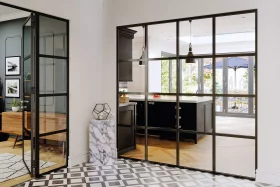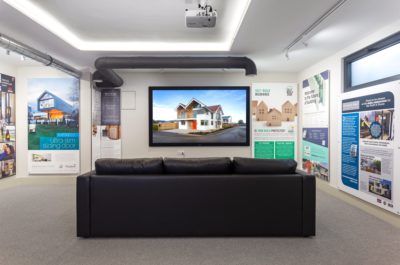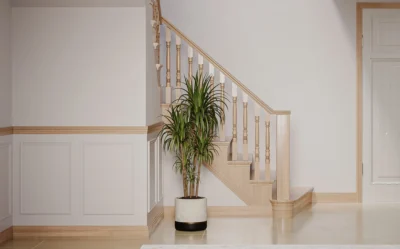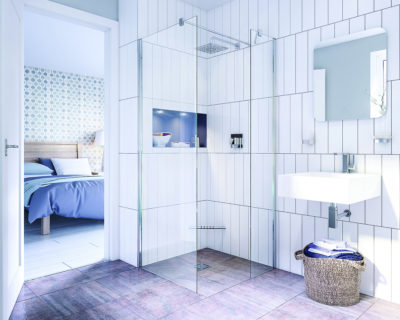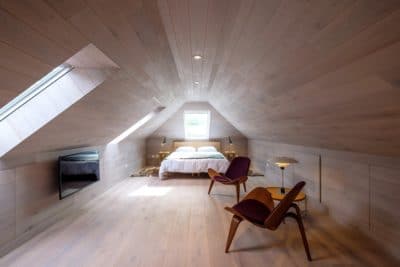Solid Wood Flooring Costs 2022: Prices for Oak, Pine, Ash & More
The beauty of a solid wood floor is its authenticity and natural character, complete with unique grain patterns and tone variations.
Wood planks are also low carbon (when sourced from sustainably-managed forests), extremely durable and can be repeatedly sanded, stained or oiled to last for decades.
With that kind of longevity, they can be a value-for-money investment – but what do you need to budget for your project and what factors will influence the price?
Types of wood flooring
The exact timber you choose will have a major impact on flooring costs. At the low end of the market, pine (£26 per m2 at B&Q) is the least hardwearing.
It can be painted or stained, but will show scratches and markings more easily than other species; although some would say this gives it a patina over time that becomes part of its appeal.
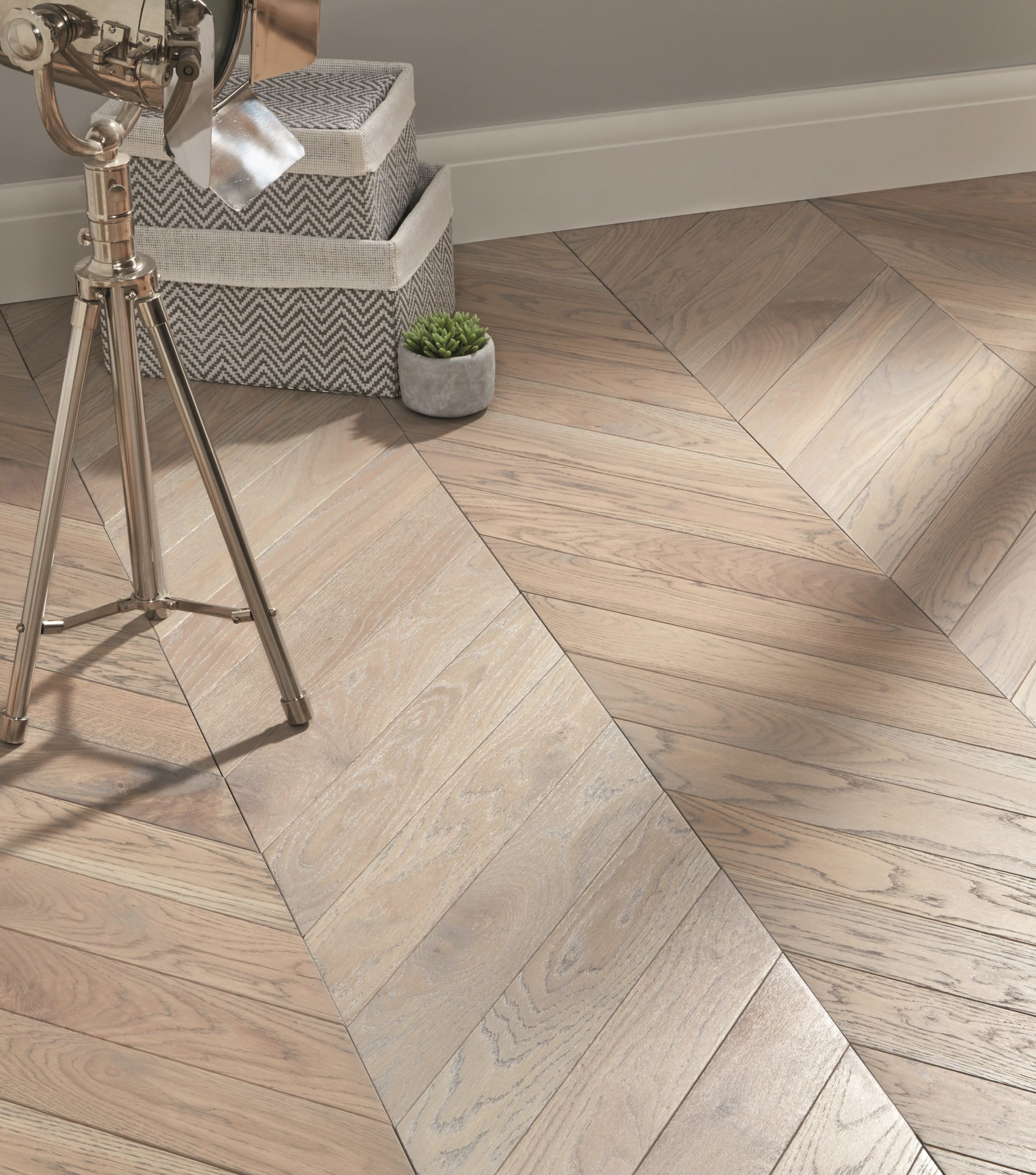
Tonal variations in the pale oak are apparent in the chevron pattern and enhanced with a brushed and oiled finish. Park Avenue Chevron in Silk Grey oak, 500mm (L) x 90mm (W) x 15mm (D), £129.99 per m2, Direct Wood Flooring
Luxury options include the dense, rich brown hardwoods like teak (£99.99 per m2 from Sale Flooring Direct), American walnut (£98.99 per m2 from Flooring Supplies) and mahogany (£119.99 per m2 from Direct Wood Flooring).
Read more: Complete Guide to Flooring for your Home
Middle-range species are silvery ash (£43 per m2 in a parquet pattern from Flooring Superstore) red-gold acacia (£49.96 per m2 from Luxury Flooring and Furnishings) and creamy-brown beech (£54 per m2 from Junckers).
Oak flooring continues to be the most popular choice in much of the UK due to its availability, durability and attractive honeyed tones.
As a result, there are more product options and price variations than with other species. For example, British Hardwoods’ European oak flooring ranges between £55 and £75 per m2.
Wood flooring grades & finishes
Price fluctuations are also driven by the quality of the timber and finishes used. “Prime grade wood is taken from the core of the tree and only makes up around 10% of it, which is what drives the price up,” explains Harry Anthony, head of trade at Luxury Flooring and Furnishings.
“It has a uniform appearance and costs about £15 per m2 more than rustic grade wood, which has knots, grain patterns and colour variations because it’s from closer to the outside of the tree.”
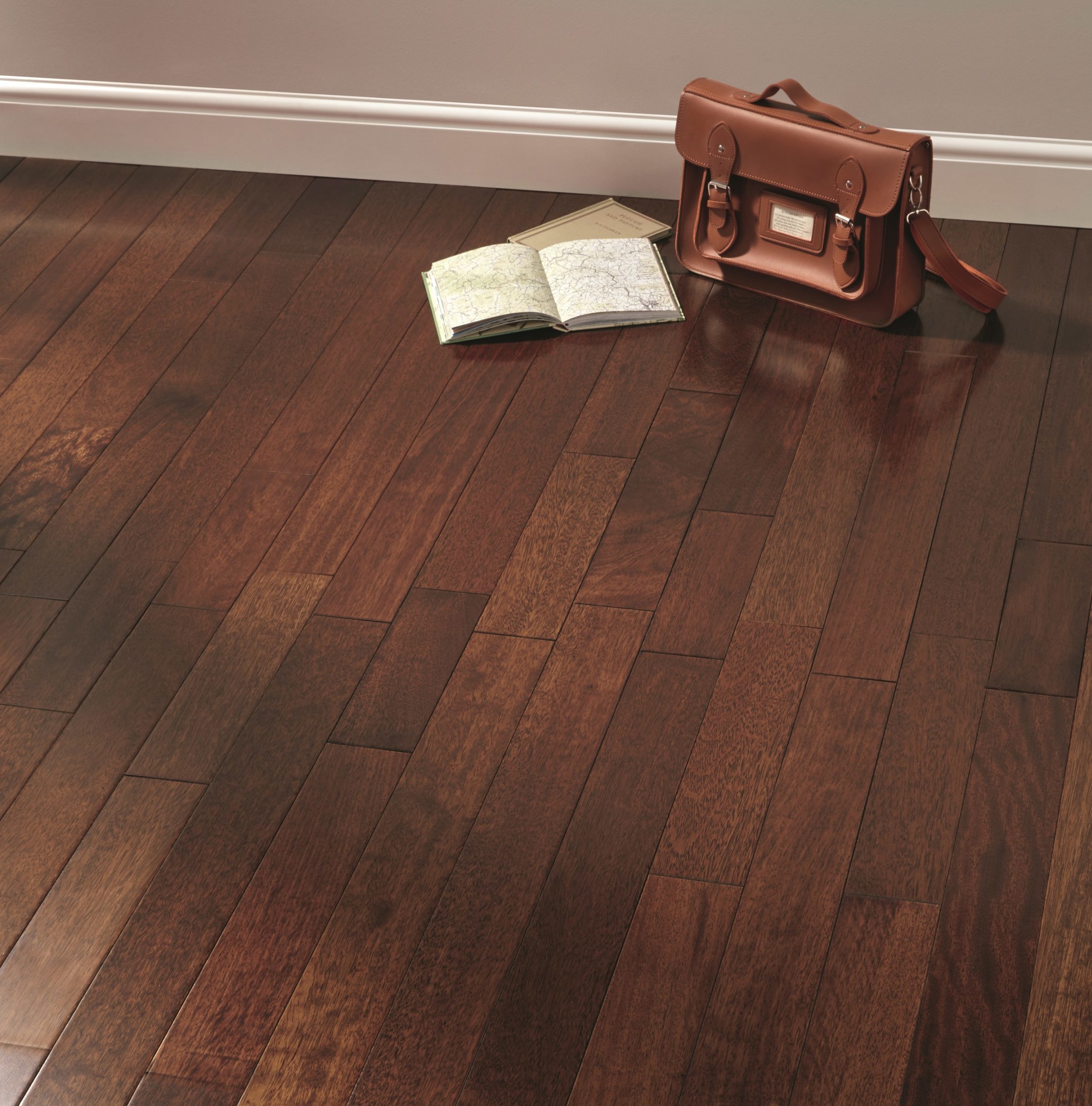
Kempas is an Indonesian wood with a rich orange-brown tone finished here with lacquer. Planks are supplied in mixed lengths from 300mm to 1,200mm (L) x 92mm (W) x 18mm (D). Royal Kempas, £79.99 per m2, Flooring Superstore
New flooring planks are available with smooth, brushed or hand-scraped surface textures. You can also specify distressed edges to add an aged appearance. Myriad stains and paints are available to help you pick the exact shade you want for your décor.
Or, opt for a neutral oil or lacquer for a natural look. Oil penetrates the wood and draws out the beauty of its natural grain, while lacquer provides a more water-resistant and extremely hardwearing surface.
| QUICK GUIDE Alternatives to solid wood flooring
Engineered wood floors: These consist of a top layer of solid wood (typically 4mm-6mm thick), adhered to a base formed of cross-laid of plywood or high-density fibreboard. It can be used throughout the house, and the boards’ stability means they perform well in kitchens and bathrooms, as well as in tandem with underfloor heating. Prices vary according to the thickness of the real-wood wear layer and quality of the base board. Example cost: £20-£50 per m2, Luxury Flooring and Furnishings. Wood-effect flooring: All of the following are designed to authentically replicate the knots, grains and textured finishes of natural wood. A broad spectrum of colours, tone variations, and plank lengths and widths is available to look as close as possible to the real deal.
|
High-quality factory finishes are the norm these days. “We coat our boards five to seven times and cure with a UV lamp in between,” says Darwyn Ker, managing director of Woodpecker Flooring. “An oiled floor can be retouched if it’s scratched, and matt lacquer has the look of an oiled floor but more durability.”
Note that – while it can look great on social media posts – solid wood flooring isn’t generally advisable in wet environments, such as bathrooms, and should be used with caution in kitchens. Exposure to high humidity and water spills will cause the boards to swell and move.
Plank dimensions
The size of the individual boards will be another big influence on price. For example, Orlestone Oak sell oak planks 80mm to 400mm wide, and in lengths between 1,500mm and 6,000mm.
The wider and longer the boards, the higher the price: rustic or character grade 2.4m (L) x 80mm-120mm (W) planks cost around £40 per m2; while mixed grade products up to 6m (L) x 361mm-400mm (W) are priced at £110 per m2.
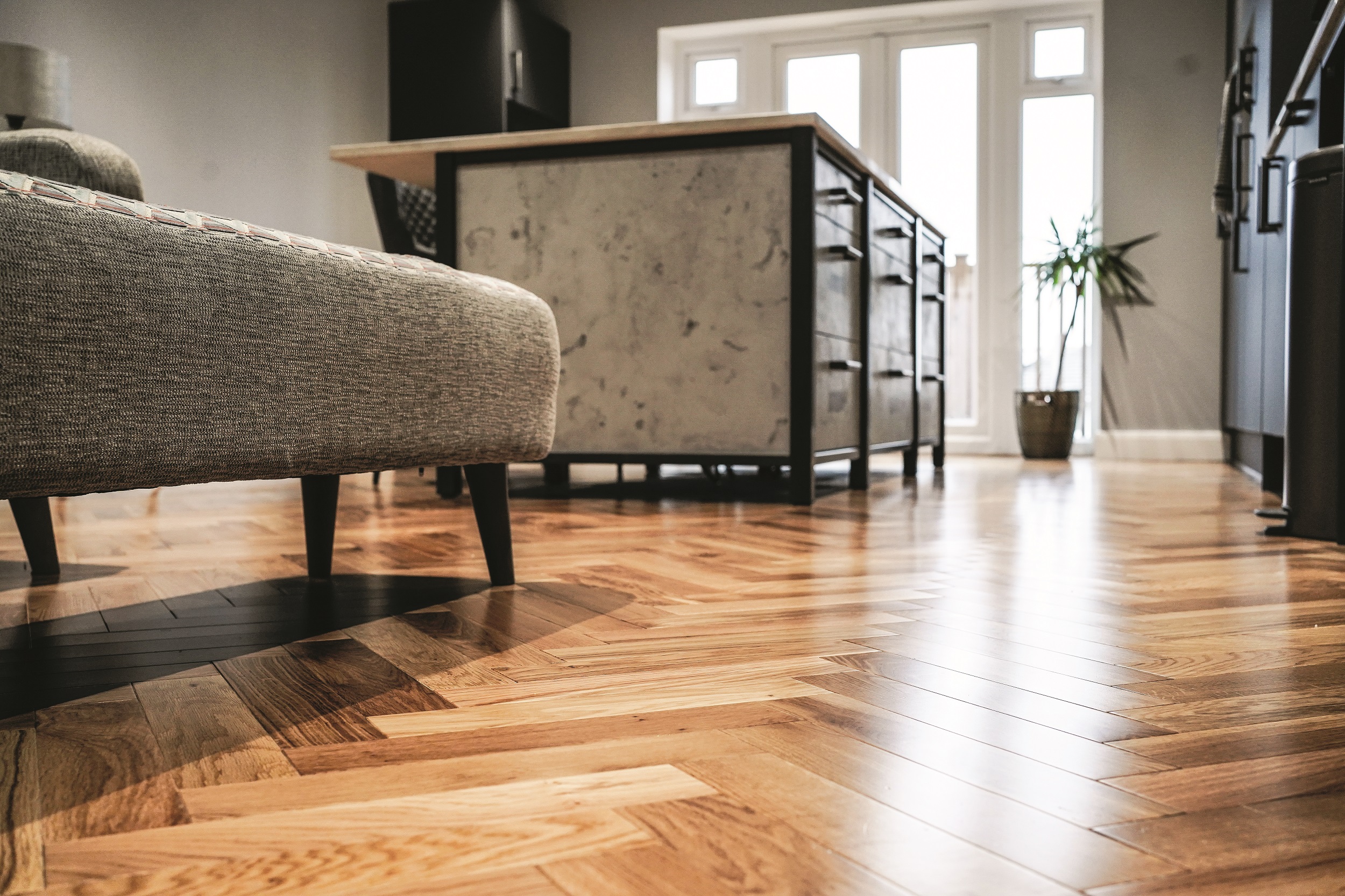
Thorpe Ranch herringbone is an oak floor fitted using a tongue and groove system and glued to the subfloor. It’s a rustic grade product with a smooth surface and lacquered finish. With a 25-year guarantee, the strips are 350mm (L) x 70mm (W) x 18mm (D). £124 per m2, Luxury Flooring and Furnishings
In general, solid boards are around 16mm-25mm deep. The thicker options will cost more but are suitable for sanding and refinishing many times over without damaging the floor’s integrity.
You can choose anything from identical planks to deliberately random lengths to achieve a heritage or rustic look. Parquet, herringbone and short stave block patterns are a big trend at the moment. They use smaller lengths to create dramatic effects. Supply prices are similar to boards.
Preparation & installation
As a rule of thumb, installation prices are similar to the cost of the flooring itself. Budget around £40-£60 per m2 for a typical installation. Factors that might push that figure up are complex room shapes, hallways with lots of doors, whether the boards need oiling or lacquering afterwards, and labour-intensive patterns such as parquet (where there are more segments to lay).
Read more: Kitchen Flooring Ideas
Most solid wood flooring is supplied with tongue and groove joints for a snug fit. The planks can be secret nailed to a timber subfloor, or glued together and then glued to concrete.
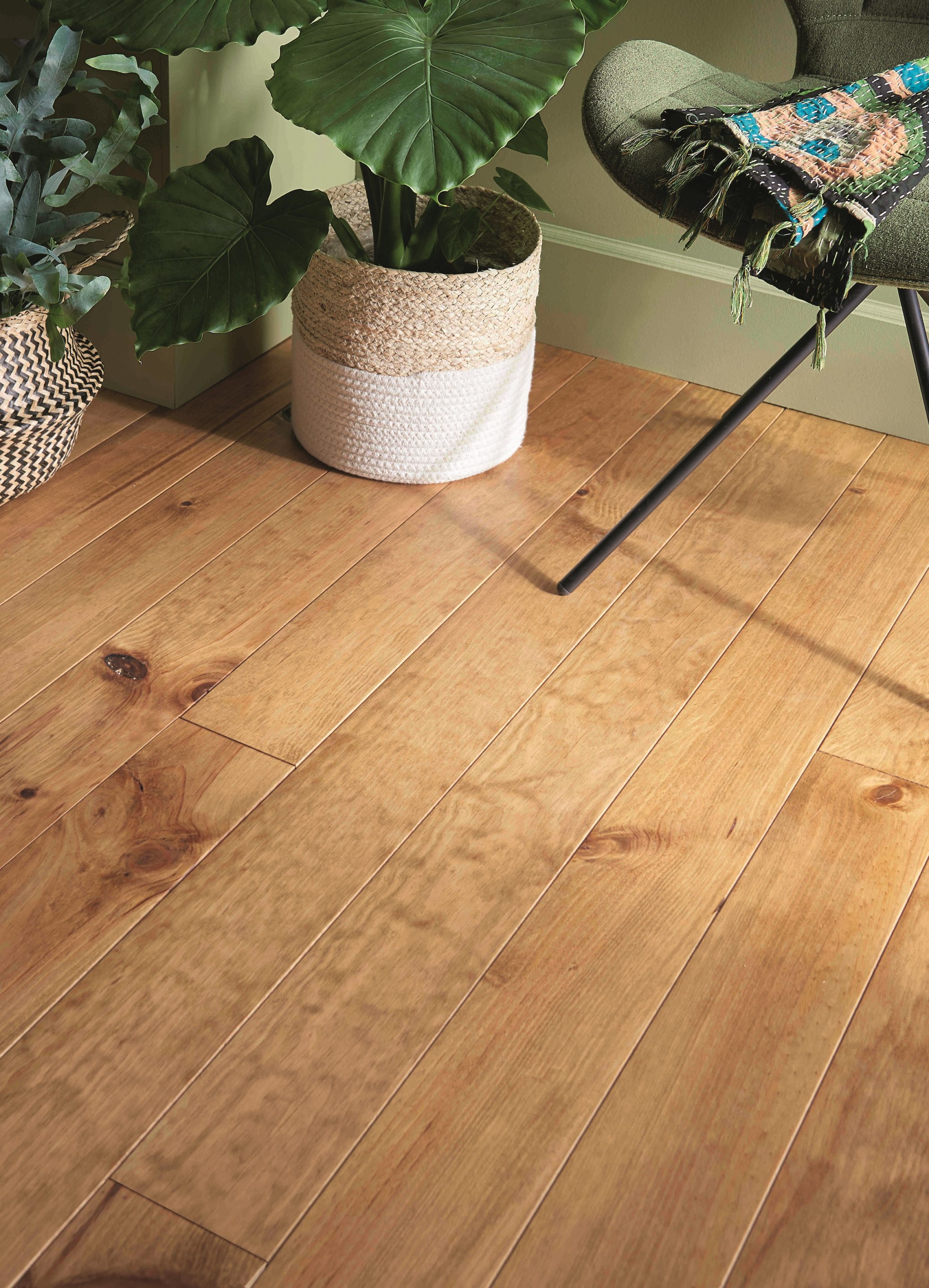
Good Home natural solid pine flooring comes with a tongue and groove fitting and bevelled edge. Each plank is 2,000mm (L) x 120mm (W) x 20mm (D). £26 per 0.96m2 pack, B&Q
Leave an expansion gap around the perimeter of 12-15mm to allow for movement. “Planks can move a little as they expand and contract, so we generally use Bona adhesive, which has a rubberised texture that provides a secure finish with a slight give,” says Jack Barton, director at Orlestone Oak.
Make sure you’re fully prepared for install day. You’ll need to check the subfloor meets with the installer’s requirements. For instance, concrete floors can be evened out with a flexible or self-levelling compound, and then topped with a damp proof membrane.
| NEED TO KNOW Solid Wood Floors & Underfloor Heating
There’s mixed opinion on whether solid wood boards should be used alongside underfloor heating (UFH). Some companies only recommend an engineered board. Richard Aylen, technical manager at Junckers, says it depends how the wood is manufactured. “We use a specially developed press drying method to make sure every floorboard has a low and consistent moisture content, which makes them stable,” he explains. “Not every solid hardwood board is made like this. A good indication is if the manufacturer guarantees its flooring with underfloor heating.” |
If you’re using a supply-and-fit service, the company may offer a site survey. This will also allow them to identify whether any scribing (cutting around permanent fixtures) and special trims are required, so they can provide a realistic timeframe and price.
Read more: Buyer’s Guide to Linoleum, Vinyl Flooring & Carpets
To reduce movement, it’s essential to open up the packaging and allow the planks to acclimatise to your home – allow at least three days.
“Concrete and plasterwork must be completely dry (concrete floor slabs for at least 60 days) and both must have a moisture level of under 12%,” advises Darryl Money, buyer at Flooring Superstore. “After installation, turn the heating up in one degree increments to further acclimatise your floor.”
Lead image: Junckers Beech Sylvaket Flooring
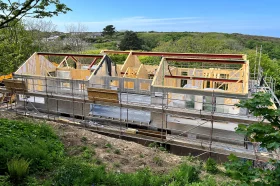


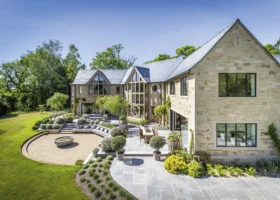












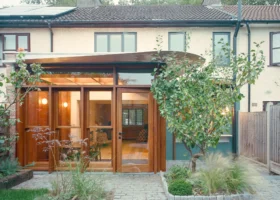















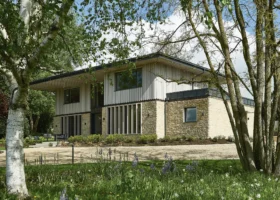
















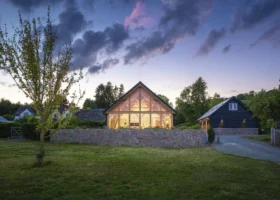













































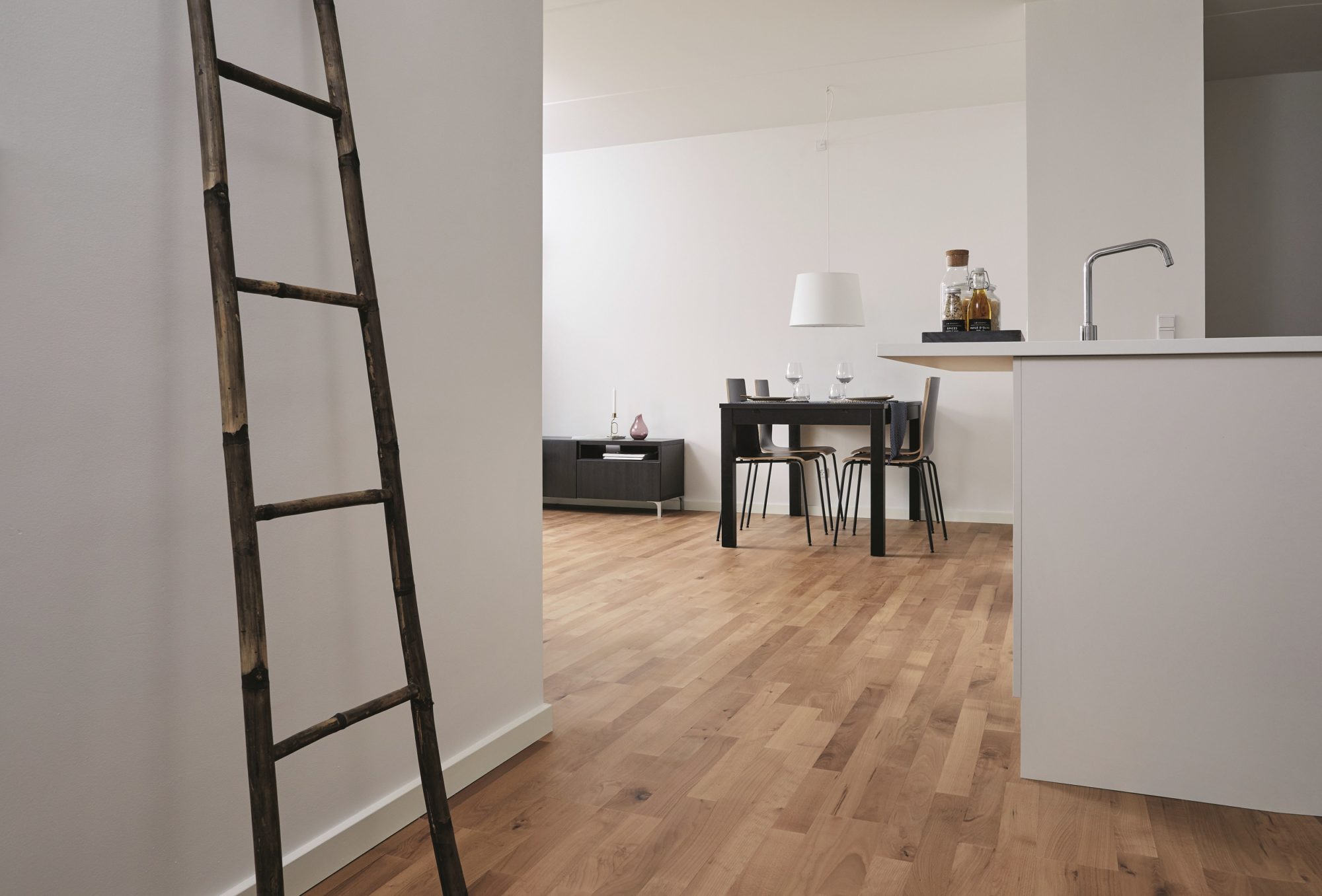
 Login/register to save Article for later
Login/register to save Article for later

